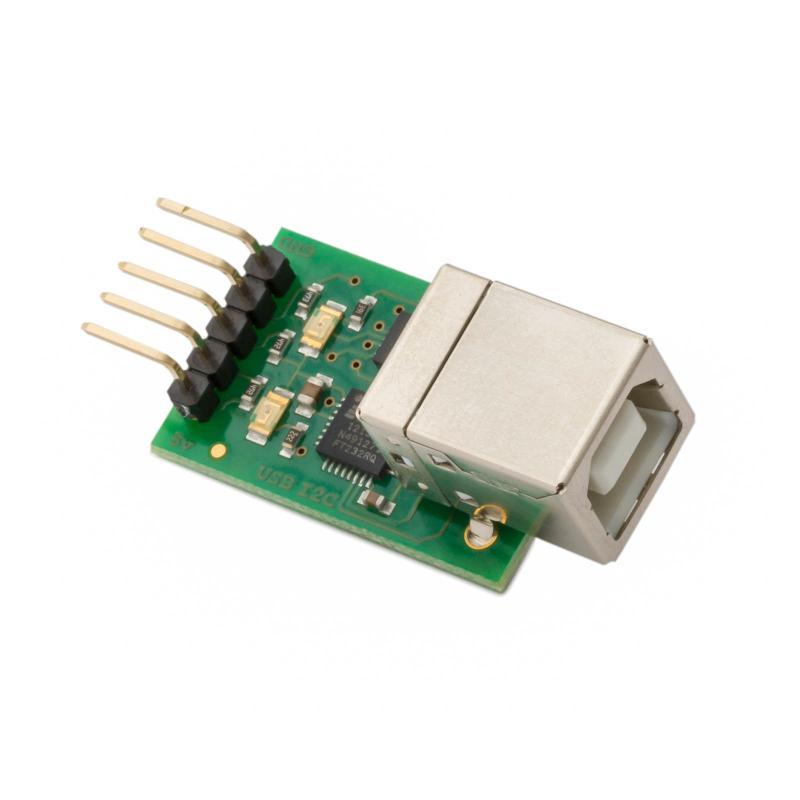
Adapter for communicating to I2C, SPI and serial buses from a USB port. Output pins may alternatively be configured as general purpose digital input/output and analog inputs.
This Devantech USB-ISS serial adapter communicates with I2C, SPI, and serial buses. It can be powered via USB type-B connector, or else configured for general-purpose digital input/output and analog input. Removing the “power link” jumper allows the module to be powered via a 3.3V source. The module can supply up to 80mA at 5.0V for external circuitry from a standard USB port. The device is compatible with Windows, Mac OS X, and Linux-based operating systems; drivers are required if it’s being operated under Windows; in other operating systems, the module will automatically appear in the system’s device tree.
Dimensions

- USB Powered
- USB to I2C
- I2C at 20kHz to 1MHz (clock stretching supported)
- USB to SPI
- SPI at 24kHz to 3MHz
- USB to Serial UART
- Serial UART at 300bps to 3Mbps
- Mounting holes
- Horizontal or vertical pin options
Pin Out
| Power Link - Remove for 3.3v operation. | |||||||||||||||||||||||||||||||||||||||||
|
| ||||||||||||||||||||||||||||||||||||||||
| Bootloader Link - Fit link for Bootloader mode |
Voltage Supply
Use the "power link" jumper to operate from 5V, or remove it for 3.3V
The USB-ISS can operate from 3.3V or 5V. With the LEDs on, it takes approximately 20mA. From a standard 100mA USB port, when operating at 5V, the USB-ISS module can supply up to 80mA to external devices. When the jumper is removed, a 3.3V regulator supplies the power. This regulator is capable of 50mA, so when running at 3.3V approximately 30mA is available to external devices. Do not apply your own voltage to this pin.
LEDs
The Green LED is a power indicator and is on when the module is connected to a powered USB port. The Red LED will flash whenever there is a valid I2C or SPI command received.
I/O pins
Each I/O pin, 1 to 4, may be individually selected to be analog input or digital Input or digital output. Inputs will not accept voltage higher than the selected supply voltage, so when operating at 3.3V the inputs are not 5V tolerant. Analog inputs span from 0v to the supply votlage, and are connectedt to a 10-bit ADC.
SCL and SDA
These pins are the I2C bus connections. They should be connected directly to the SCL and SDA pins on your I2C device. The USB-ISS module is always a bus master, and is fitted with 4.7kΩ pull-up resistors. These resistors are automatically disconnected in other modes.
SDI, SCK, SDO and CE
SDI is the SPI input to the USB-ISS, connect it to SDO on your device.
SDO is the SPI output from the USB-ISS, connect it to SDI on your device.
SCK is the SPI clock output from the USB-ISS, connect it to SCK on your device.
CE is the active low chip enable signal, connect it to CE on your device.
Tx and Rx
These are logic level signals, not RS232. Do not connect this to an RS232 port without using a suitable RS232 logic level adapter.
0v Ground
The 0v Ground pin must be connected to the 0v (Ground) on your device.
Command Interface
See the technical documentation for the command interface.



Add New Review